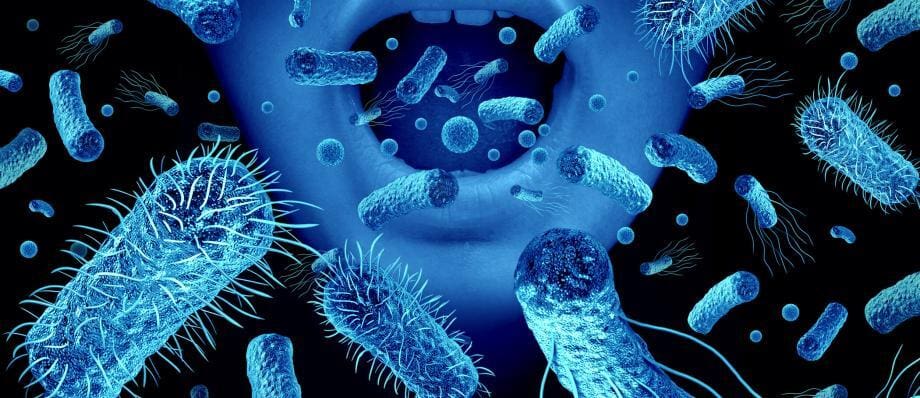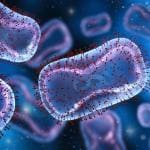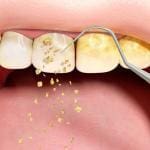The oral cavity is a thriving ecosystem teeming with diverse microbial communities. While most people associate the mouth with dental diseases and bacteria, it is essential to recognize that not all microorganisms present in the oral cavity are harmful. In fact, a delicate balance of microbial populations contributes to maintaining oral health. This article delves into the intricate world of microbial communities in the oral cavity. Understanding the complexity of these microbial communities is key to promoting oral hygiene and preventing dental diseases.
Defining the Oral Microbiome
The oral microbiome refers to the collective microbial population present in the oral cavity. It is a vast and diverse community of microorganisms that includes bacteria, fungi, viruses, and other microbes. These microorganisms interact with each other and with the human host, forming a complex ecosystem.
The oral microbiome is unique to each individual, influenced by various factors such as genetics, environmental factors, diet, oral hygiene practices, and overall health. It can vary greatly between individuals, contributing to the differences in oral health outcomes and susceptibility to dental diseases.
Advancements in DNA sequencing technologies have significantly contributed to our understanding of the oral microbiome. Studies using molecular techniques have revealed a much broader range of microbial species in the oral cavity than previously known.
It is important to note that the oral microbiome is not solely composed of harmful bacteria. In fact, a diverse community of beneficial microorganisms exists within the oral cavity, playing essential roles in maintaining oral health and preventing the overgrowth of pathogenic bacteria.
The study of the oral microbiome has paved the way for a deeper understanding of the complex interactions between microorganisms and their human host. This knowledge has significant implications for oral health research, preventive strategies, and personalized approaches to dental care.
The Microbial Diversity in the Oral Cavity
The oral cavity is home to a wide array of microorganisms, with over 700 identified species of bacteria alone. These microorganisms are distributed throughout different oral habitats, including the teeth, gums, tongue, cheeks, and saliva. Each of these habitats offers unique conditions that shape the composition of the microbial communities.
Bacteria are the most abundant microorganisms in the oral cavity. They can be categorized into different groups based on their characteristics, such as Gram-positive or Gram-negative, aerobic or anaerobic, and acid-producing or non-acid-producing. Some commonly found bacteria in the oral cavity include Streptococcus, Actinomyces, Veillonella, and Prevotella, among others.
Apart from bacteria, fungi, viruses, and other microorganisms also contribute to the oral microbiome. Fungi, particularly Candida species, are present in the oral cavity and can become pathogenic under certain conditions. Viruses, such as herpes simplex virus and human papillomavirus, can also inhabit the oral cavity and have implications for oral health.
The composition of the oral microbiome is influenced by various factors, including oral hygiene practices, diet, smoking, medications, and systemic health conditions. For example, a diet high in sugar can promote the growth of acid-producing bacteria, contributing to dental decay. Additionally, certain medications, such as antibiotics, can disrupt the balance of microbial communities in the oral cavity.
Advancements in DNA sequencing technologies have allowed researchers to explore the oral microbiome in greater detail. These techniques have revealed a higher level of microbial diversity than previously known, with the identification of novel species and the recognition of variations between individuals.
Understanding the microbial diversity within the oral cavity is essential for comprehending the complexities of oral health and disease. By studying the different microorganisms and their interactions, researchers can gain insights into the factors that contribute to a balanced oral microbiome and those that disrupt its equilibrium, leading to dental diseases.
Microbial Succession and Dynamics
Microbial succession refers to the sequential changes in microbial communities over time. It involves the colonization, growth, and replacement of different microbial species within a particular environment. The oral cavity undergoes microbial succession from birth, with the establishment of the initial microbial communities and subsequent changes throughout life.
The process of microbial succession within the oral cavity is influenced by various factors, including host genetics, environmental factors, oral hygiene practices, diet, and immune responses. For example, the eruption of primary teeth in infants provides a new surface for microbial colonization, leading to shifts in the oral microbiome.
As individuals age, the oral microbiome evolves, influenced by changes in oral physiology, hormonal fluctuations, and shifts in lifestyle and diet. These changes can affect the microbial diversity, composition, and balance within the oral cavity.
Microbial dynamics within the oral cavity are characterized by interactions between different microorganisms. These interactions can be cooperative, competitive, or neutral. Cooperative interactions occur when microorganisms work together for mutual benefit, such as in the breakdown of complex carbohydrates. Competitive interactions involve microorganisms competing for resources, which can influence the dominance of certain species. Neutral interactions refer to situations where microorganisms have no significant impact on each other.
The dynamics of microbial communities can be influenced by disturbances to the oral environment. For example, the use of antibiotics can disrupt the balance of microbial populations, allowing opportunistic pathogens to thrive. Similarly, poor oral hygiene practices can lead to an overgrowth of pathogenic bacteria, altering the composition of the oral microbiome and increasing the risk of dental diseases.
Understanding microbial succession and dynamics within the oral cavity is crucial for comprehending the development and progression of oral diseases. Imbalances in the oral microbiome, resulting from disruptions in succession or alterations in microbial interactions, can contribute to the onset of dental caries, gum disease, and other oral infections.
The Oral Microbiome and Human Host Interactions
The oral microbiome and the human host have a complex interdependence, with each influencing the other in various ways. These interactions can have both positive and negative effects on oral health.
The oral environment provides a habitat for microorganisms to thrive, offering nutrients and surfaces for colonization. In turn, microorganisms contribute to the functioning and homeostasis of the oral cavity. For example, certain bacteria in the oral microbiome aid in the digestion of complex carbohydrates, which helps maintain oral health.
However, the oral microbiome can also pose risks to the host if its balance is disrupted. Imbalances in microbial populations, caused by factors like poor oral hygiene or diet, can lead to the overgrowth of pathogenic bacteria and the development of oral diseases.
The immune system plays a crucial role in regulating the interactions between the oral microbiome and the host. The immune response helps maintain a balanced and healthy oral environment by recognizing and controlling potentially harmful microorganisms. However, dysregulation of the immune response can lead to inflammatory conditions and contribute to the progression of oral diseases.
Furthermore, the oral microbiome can influence systemic health beyond the oral cavity. Research has suggested links between oral health and conditions such as cardiovascular disease, diabetes, respiratory infections, and pregnancy complications. The translocation of oral bacteria into the bloodstream can potentially contribute to systemic inflammation and other health complications.
Understanding the interactions between the oral microbiome and the human host is essential for promoting oral health and preventing oral diseases. By studying these interactions, researchers can identify biomarkers and develop personalized approaches to dental care that consider an individual’s specific oral microbiome composition and immune response.





